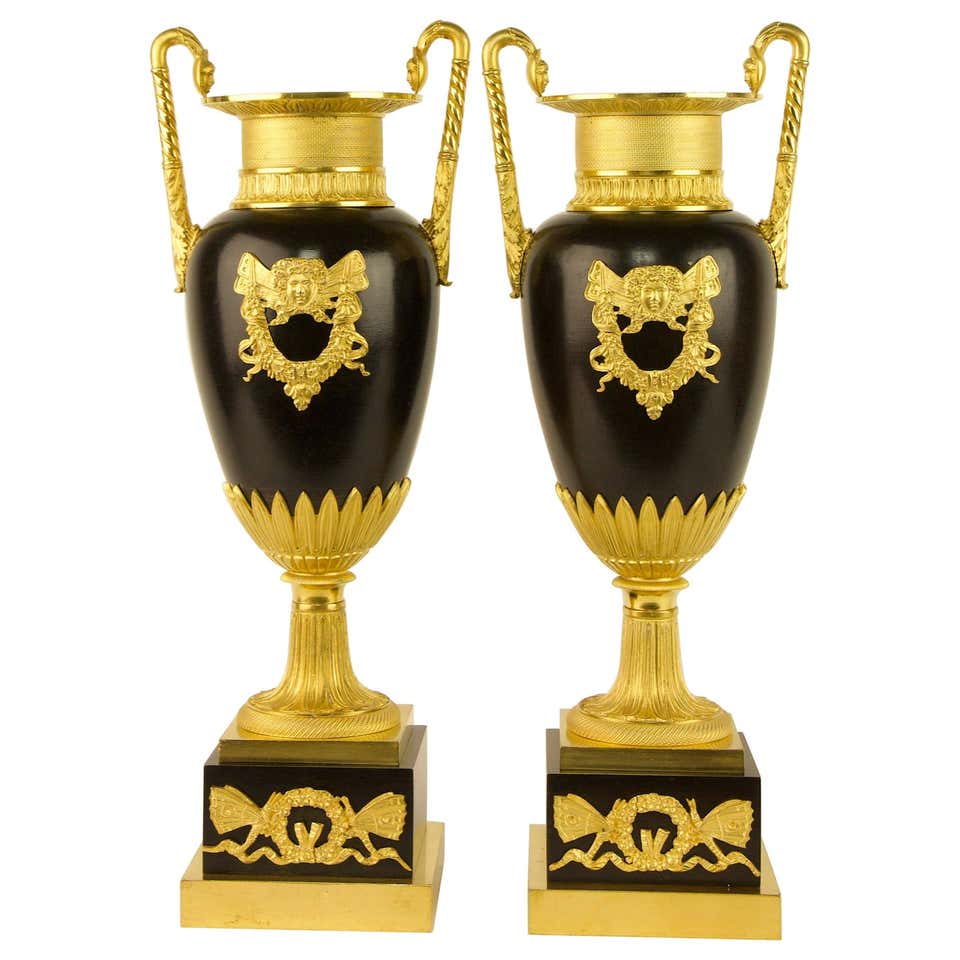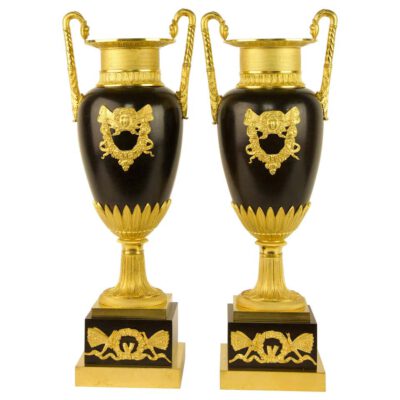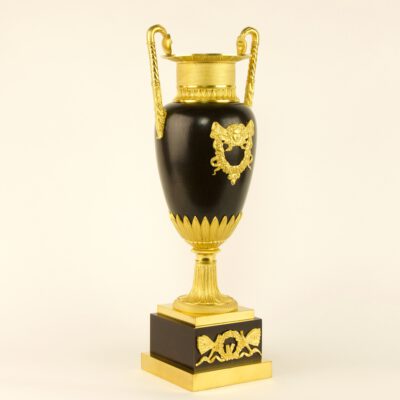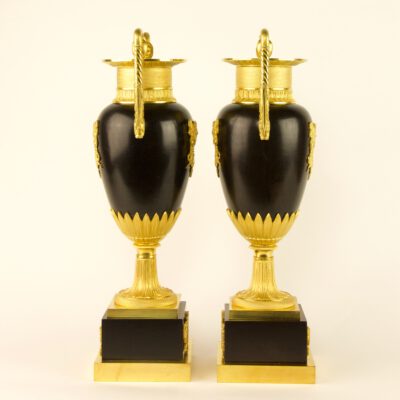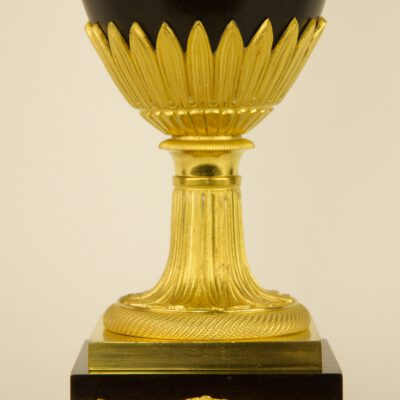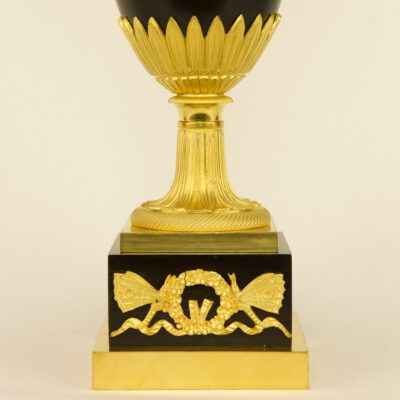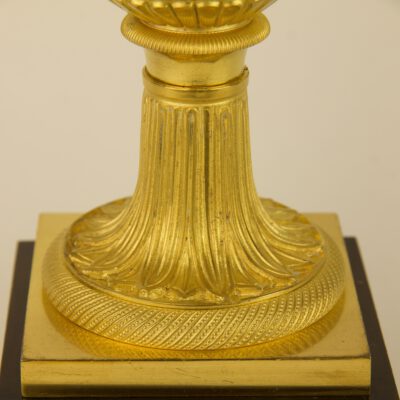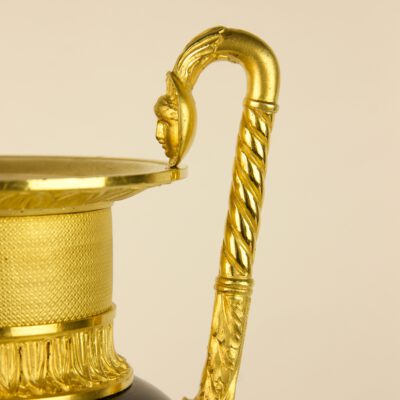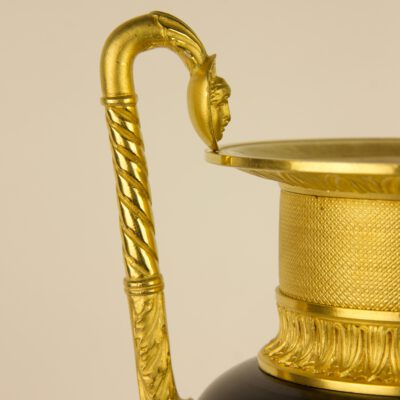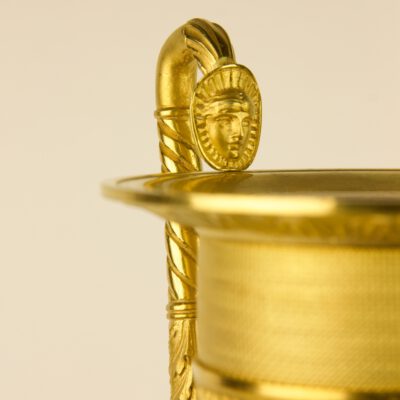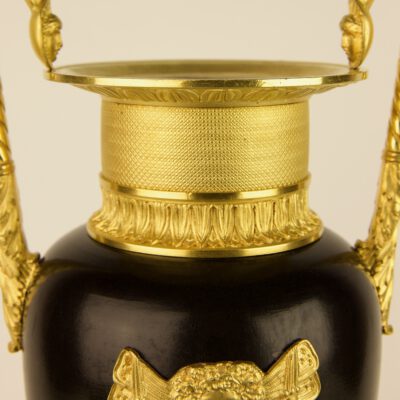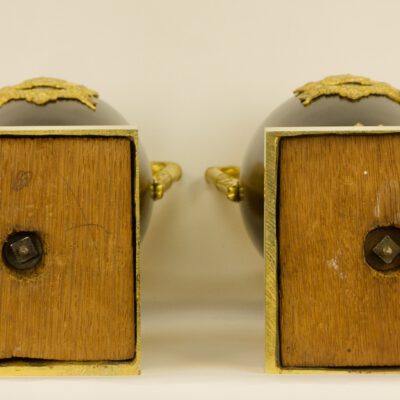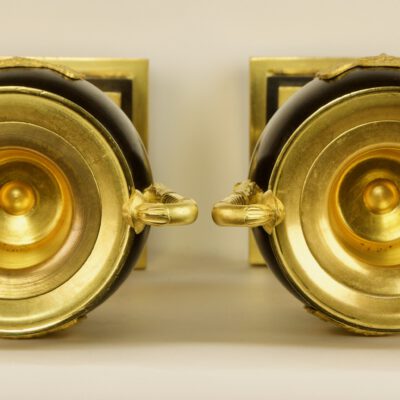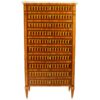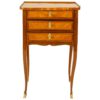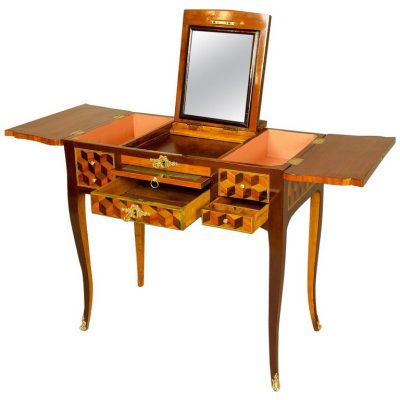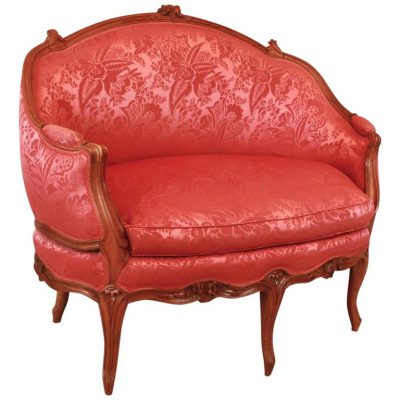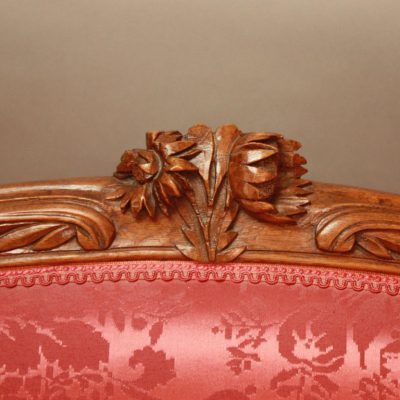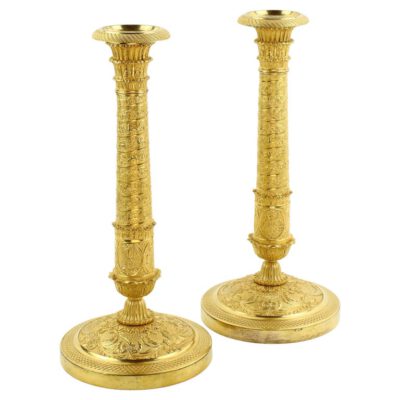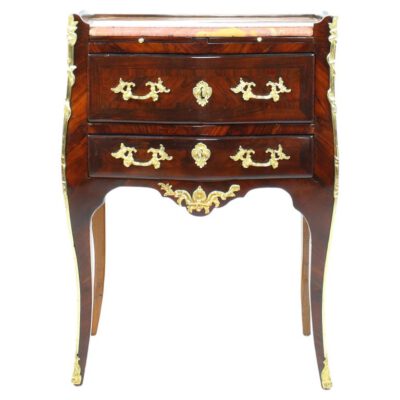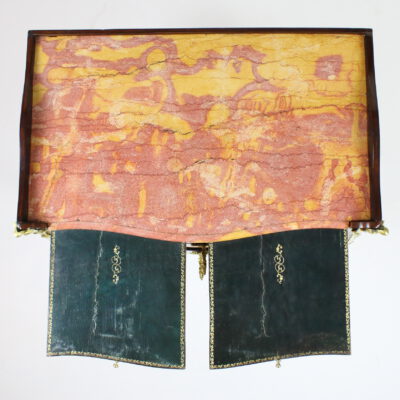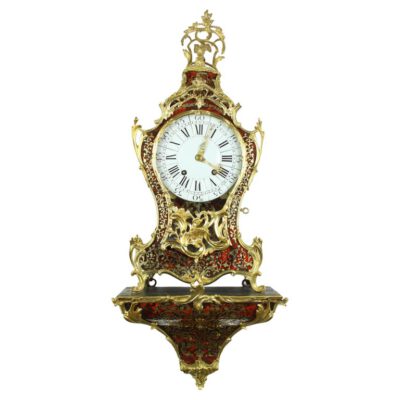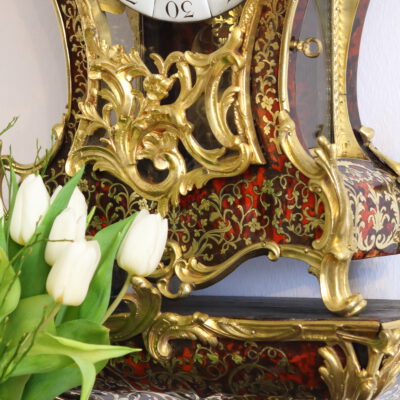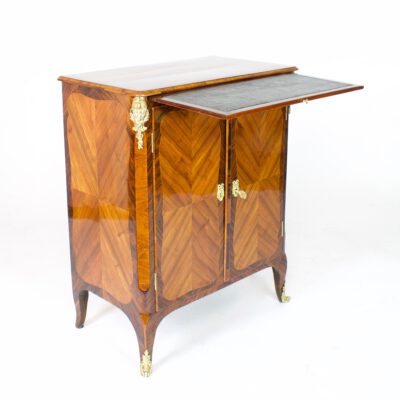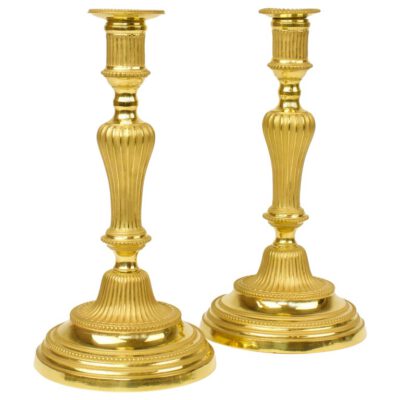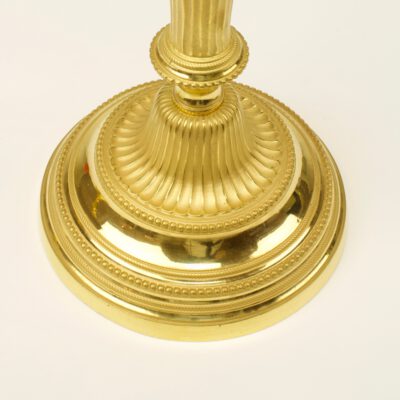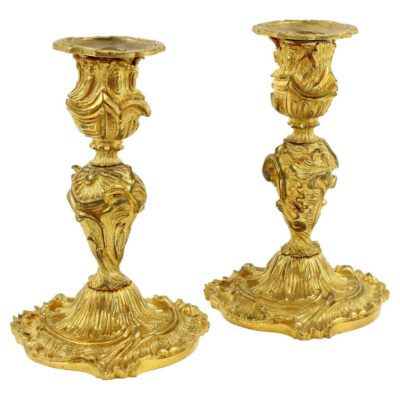Pair of Early 19th Century French Empire Gilt and Patinated Bronze Amphora Vases in the manner of Claude Galle (1758-1815):
standing on a rectangular pedestal and a high round foot the oviod body bears two high and slender handles which are connected to the cylindrical neck by oval sun faces. The depth of the vase is only as deep as the height of the neck. The pedestal and the body are patinated black while foot, neck, handles and decoration show an elaborate gilding. Front and back of the vases are decorated with gilt-bronze vignettes of butterfly-winged zephyr heads adorned with flower garlands, the pedestals show gilt-bronze appliques of flower wreaths accompanied by pairs of butterflies.
The decoration applied on this excellently crafted pair of Empire amphora vases or urns realtes to its use as vessels for flower decoration or floral fragrances: it tells the story of the marriage of Zephyr, the Greek god of the West wind and the nymph Chloris who, through this marriage, became the goddess Flora; Zephyr is characterized by his typical butterfly wings, while Flora is symbolized by the flower garlands and flower wreaths. A very rare and charming addition to this principle of decoration are the sun faces at the handles as a crucial element for the growth of nature and flowers.
The elaborate and highly decorative pair of French Empire vases is inspired by models of one of the most famous bronziers and decorators of his time, Claude Galle (1758-1815): having been received as a maître in 1786, Galle nearly immediately gained many commissions from the Garde-Meuble de la Couronne and then enjoyed significant patronage under Emperor Napoleon. He is known to have collaborated with Pierre-Philippe Thomire (1751-1843) and was responsible for the majority of bronzes d’ameublement supplied during the Empire to Château de Fontainebleau and other palaces. The world’s finest collections exhibiting his work, i.e. Musée National de Château de Malmaison, the Musée Marmottan in Paris, the Museo de Reloges at Jerez de la Frontera, the Residenz Munich and the Victoria and Albert Museum in London.
Condition: very good, min. wear consistent with age and use, min. fading – detailed condition report on request

